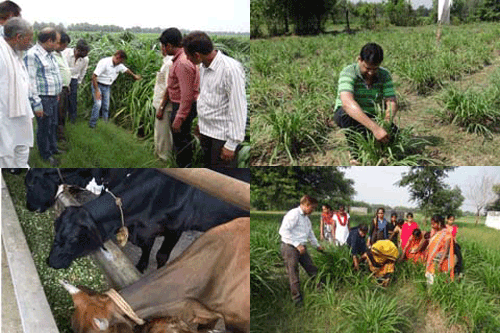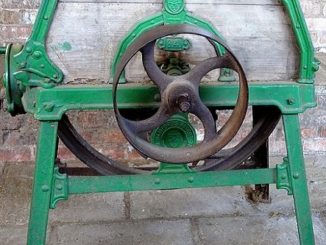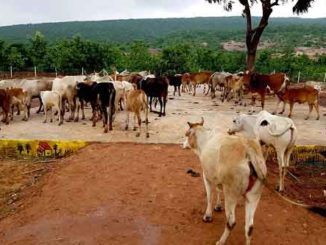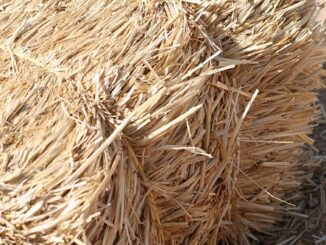The adequate availability of green fodder impacts the general as well as reproductive health of livestock, their milk and the economics of dairy enterprise. The green fodder is being cultivated only on 8.4 million hectares (5.23%) of cropping area in India. Considering the season-wise total crop sown area, the fodder crops occupied only 1.02%, 1.54% and 0.78% in Rabi (3,384 hectares), Kharif (5,113 hectares) and Zaid (2,593 hectares), respectively during the Year – 2013-14 in Bareilly District of Uttar Pradesh, whereas, the total livestock population of the District is 1,125,743, as per the 19th Livestock census in the Year – 2012 that indicates the wide gap between the livestock and availability of green fodder.
Considering the problem of green fodder in Bareilly District, the ICAR-Indian Veterinary Research Institute, Izatnagar implemented the intensive promotional activities in Year – 2017 for popularizing the Bajra Napier Hybrid (B-N Hybrid) to make the farmers aware about its quality of green fodder and economics of cultivation.

The series of extension education programme in form of exposure visit of farmers to the demonstration (30 acres) of B-N Hybrid at the institute’s fodder farm, farmers’ workshops, interface meet and training, development of YouTube, a success story of a village through YouTube video encouraged the farmers to adopt the B-N Hybrid cultivation not only in Bareilly District of Uttar Pradesh, but in 10 other states of the country too.
Upon receiving the request from around 450 farmers/youths of 10 States for supplying them with the planting materials, viz., cuttings / rooted slips of B-N Hybrid; the Institute is supplying up to 40 cuttings / farmers to those farmers residing in the distant places, viz., Assam, Manipur, Gujarat, Maharashtra and Jharkhand, etc.
The ICAR-IVRI has distributed/supplied 6,84,440 cuttings to the farmers of Uttar Pradesh, Assam, Uttarakhand, Jharkhand, Bihar, Haryana, Delhi, Gujarat, Rajasthan, Odisha and Manipur.
Earlier, the farmers of Bareilly District were not aware about the B-N Hybrid; the Institute’s extension activities enhanced the farmers’ interests in Bareilly District in the cultivation of the Hybrid. The area under the B-N Hybrid in Bareilly has increased 0.08 to 3 acres at farmers’ field as per the analysis of 200 adopters of B-N Hybrid. Now, the farmers are taking 10-15 tillers/plant in first harvesting and it was increased up 60 to 120 tillers / plants in third harvesting. The farmers got 220-250 quintals/acre of green fodder of B-N Hybrid in the third harvest.
The regular availability of green fodder of B-N Hybrid to the dairy animals has increased 0.5 to 1.0 litre of milk yield / day as has been reported by the farmers. Earlier, the dairy animals were deprived of green fodder during lean season which resulted into low milk production. But, as of now, the B-N Hybrid’s cultivation is providing regular green fodder to their dairy animals. This has resulted in enhancing the lactation period up to 1 month. Further, the technology has also been spread by the farmers by distributing the cuttings / rooted slips of B-N Hybrid to their relatives and farmers of other villages. This process has led to bring around 40 acres of area under B-N Hybrid due to Farmer-to-Farmer Extension.
Now, the monthly net income / acre at farmers’ field has increased to Rs. 4,103 in first year by taking 4 cuttings, whereas, in second year, the net income / acre at farmers’ field was Rs. 10,369 by taking 6 cuttings of B-N Hybrid.






Be the first to comment